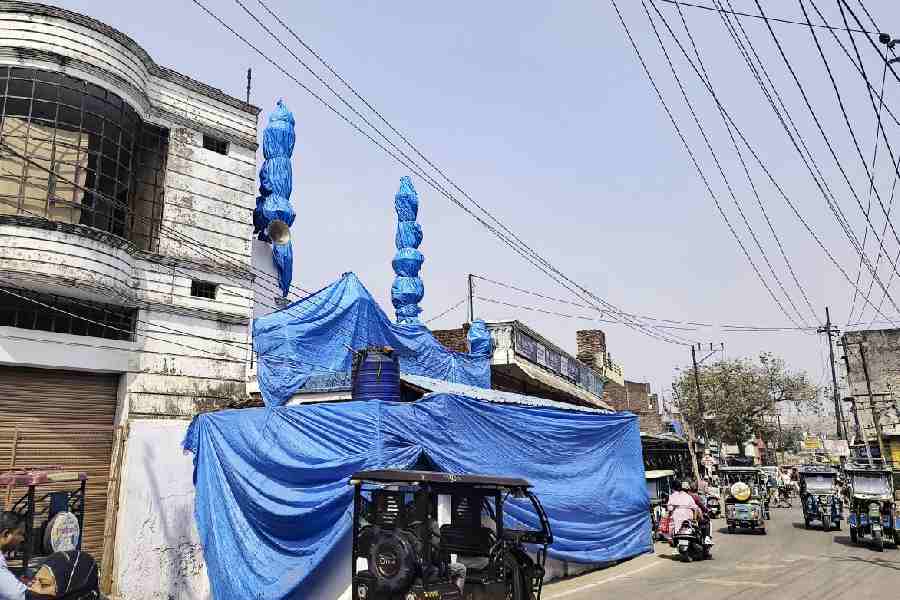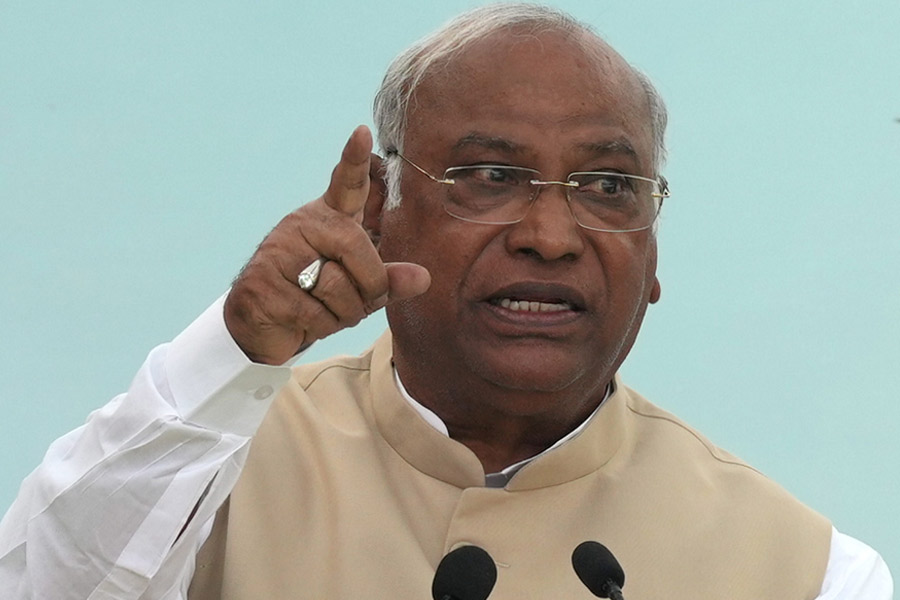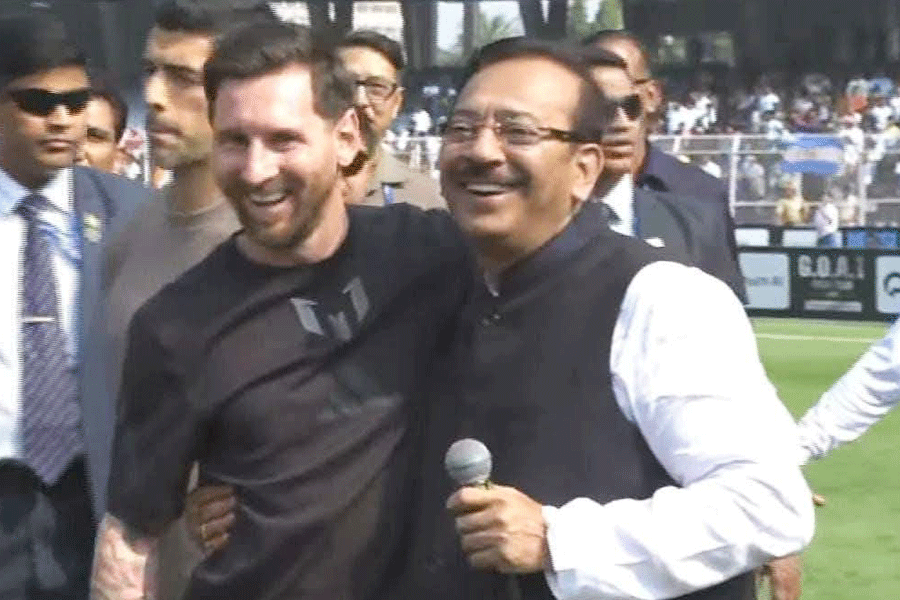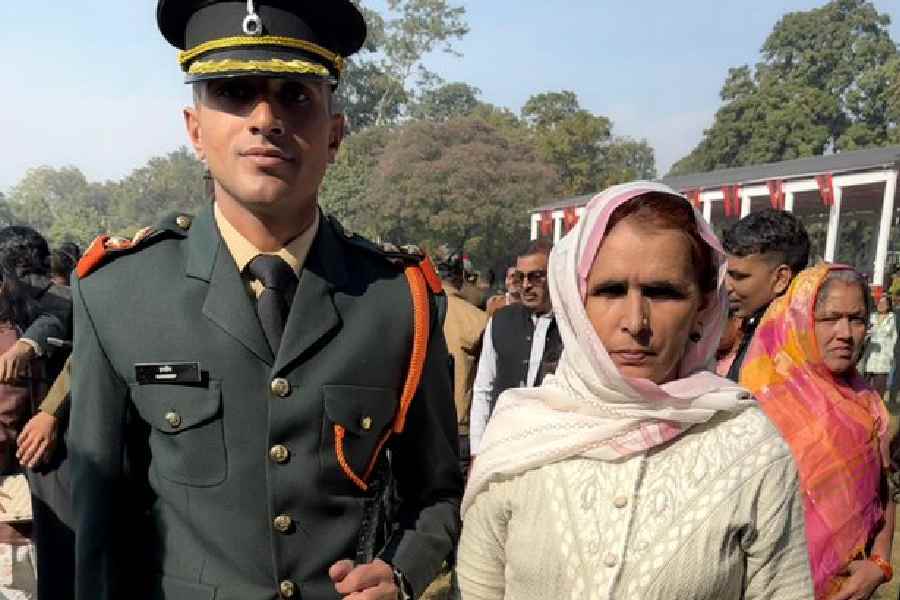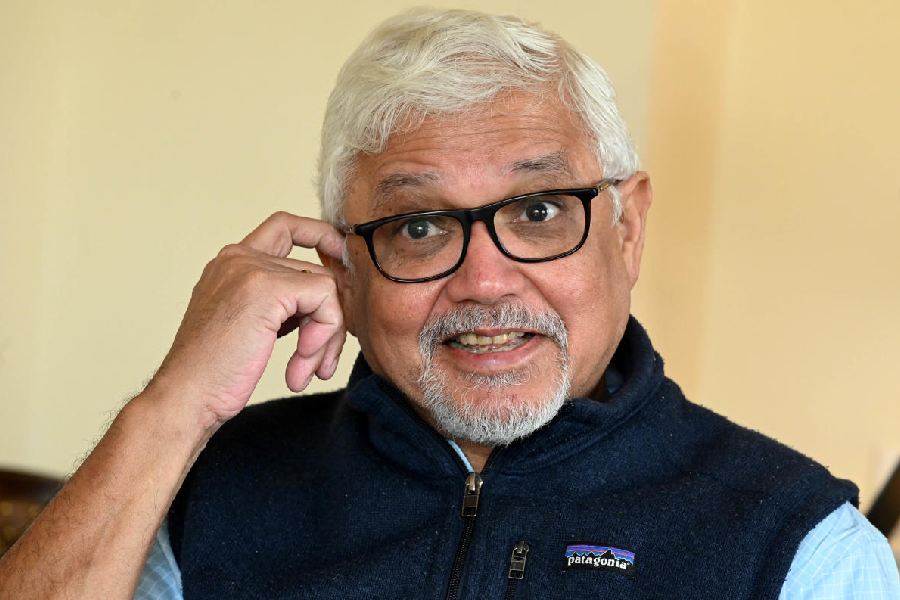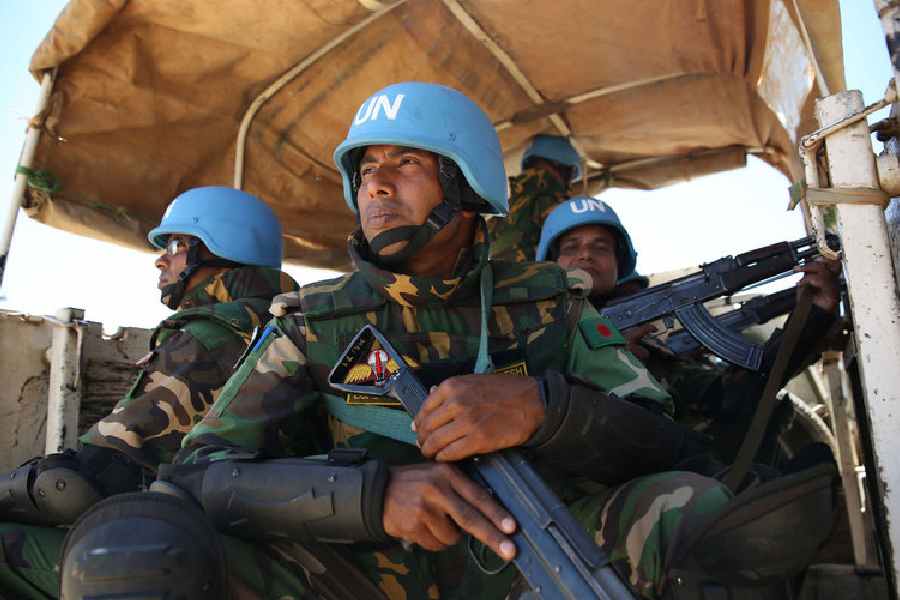The famed Banke Bihari temple in Vrindavan has rejected a Hindutva group’s demand to stop buying clothes for the deity from Muslims, taking a stand against hate amid a shower of communal vitriol from BJP ministers and lawmakers in the run-up to Holi.
“The temple management met and decided not to accept the weird demand,” Gyanendra Kishore Goswami, senior priest at the Sri Thakur Banke Bihari Ji Maharaj Mandir, told reporters on Thursday.
“Most of those who stitch clothes for the idol are Muslim. They are the best tailors and the most disciplined. They understand our needs and work with devotion.”
The Sri Krishna Janmabhoomi Sangharsh Nyas has urged all temples in Mathura district to stop buying clothes for their deities from Muslims. It had written to the Banke Bihari temple management too.
Nyas president Dinesh Falahari said: “God’s clothes need to be pure; they shouldn’t be stitched by people who don’t respect Mother Cow and the Hindu religion.”
Hindutva groups have made similar demands to temple authorities in Varanasi, Ayodhya, Sambhal and other districts of Uttar Pradesh, where Muslim tailors have traditionally bought cloth and stitched dresses for temple deities. The Banke Bihari temple is the first to come out openly against the demand.
“This temple is 164 years old. Some 30,000 to 40,000 devotees visit the shrine on weekdays. This number multiplies on Sundays and holidays,” priest Gyanendra
Kishore said.
“There is tremendous pressure on us to keep changing the idol’s clothes. We need special clothes for the idol during festivals. Muslim tailors supply them to us without fail. We can’t change the tradition just because some people dislike it.”
Another priest at the temple, Anant Bihari Goswami, said: “Muslims have been supplying over 99 per cent of the clothes for the deity since the beginning…. We refuse to discontinue the temple’s tradition and culture.”
He added: “Those making such demands want to hurt Muslims financially, but we respect every religion and every person.”
The temple’s stand contrasts with a recent spurt in comments from BJP politicians, including chief minister Yogi Adityanath, that appear to seek to humiliate Muslims.
State minister Raghuraj Singh has suggested that Muslims cover themselves with tarpaulin to avoid being sprayed with colour while stepping out of their homes to offer Friday prayers during Holi.
Adityanath has publicly advised Muslims — echoing a senior police officer — to offer namaz at home on March 14 if they want to avoid being smeared because “Holi comes once a year but Jumma Namaz is offered every Friday”.
Ruling party MLA Ketakee Singh has demanded a separate ward for Muslims at an under-construction medical college in Bansdih because “they have a problem playing Holi with us” and “maybe they have a problem receiving treatment on premises where Hindus are treated”.
None from the minority community has, however, expressed any fear about being smeared with Holi colours, with many Muslim clerics stressing there can be no conflict over the celebration of Holi and the offering of the Jumma Namaz on the same day.
Some clerics have in a spirit of accommodation suggested the Jumma Namaz be shifted from 1pm to 2pm so that the Holi celebrations can go on unhindered.
Mathura district, where Vrindavan is located, has become a hotbed of Hindutva politics. Some Hindutva groups are seeking a relocation of the Shahi Idgah mosque, which stands close to the Sri Krishna Janmasthan temple at what they believe to be Krishna’s birthplace in Mathura City.
Over half-a-dozen court cases have been moved seeking a handover of the mosque site to Hindus. The petitioners claim that Mughal emperor Aurangzeb got a portion of the original Krishna temple demolished and the Shahi Idgah built on the site.

